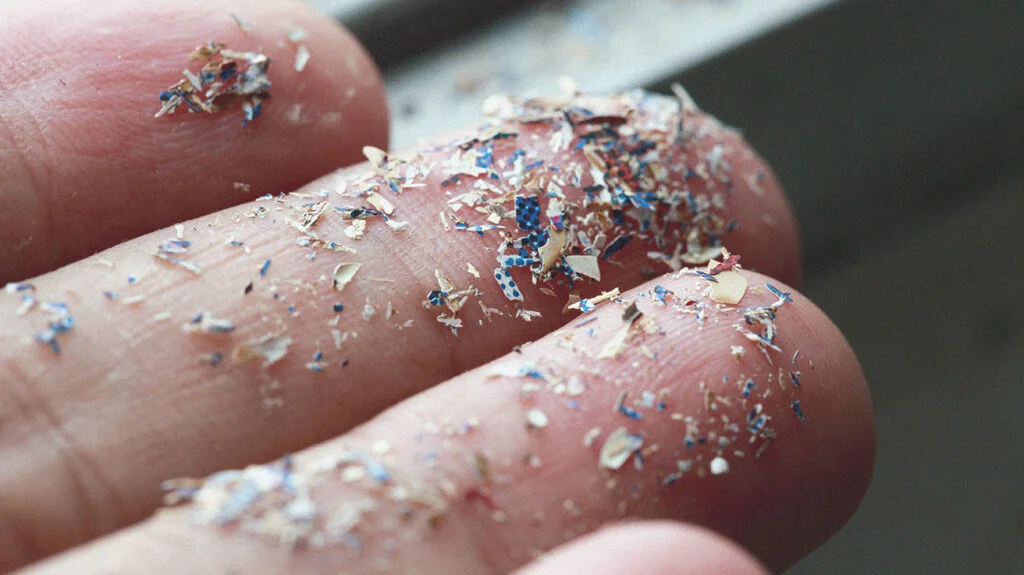Unveiling the Microplastic Menace: Traces Found in Every Human Placenta
03/01/2024
In an era where plastic pervades every aspect of our lives, from the water we drink to the food we eat, a startling revelation has emerged from the laboratories of the University of New Mexico Health Sciences Center. Recent research has uncovered a pervasive presence of microplastics within the delicate confines of the human placenta, shedding light on a potentially profound health concern.

Published in the esteemed journal Toxicological Sciences, the study conducted by a team led by Dr. Matthew Campen has sent shockwaves through the scientific community. Out of 62 placenta samples meticulously tested, microplastics were discovered in every single one. These minuscule particles, measuring mere micrometers in size, were found at concentrations ranging from 6.5 to a staggering 790 micrograms per gram of tissue.
But what are microplastics, and how do they infiltrate the human body? Microplastics, fragments smaller than five millimeters in length, result from the degradation of larger plastic items or are intentionally manufactured for various purposes. They have insidiously permeated the environment, from the depths of the ocean to the air we breathe. And now, it seems, they have found their way into the womb, embedding themselves within the very fabric of human life.
Polyethylene, polyvinyl chloride (PVC), and nylon emerged as the predominant polymers detected within the placental tissue. These ubiquitous materials, used in everyday products like plastic bags and bottles, have surreptitiously seeped into the most intimate realms of our existence, raising profound questions about their potential impact on health and development.
Dr. Campen, a Regents’ Professor renowned for his expertise in pharmaceutical sciences, underscores the gravity of the situation. He warns that while the concentrations of microplastics may seem infinitesimal, their cumulative effect over time could have dire consequences for human health. Indeed, as the adage goes, “the dose makes the poison,” and with microplastics infiltrating even the sanctity of the placenta, no individual is immune from their insidious influence.
The methodology employed by the researchers to detect these elusive particles is as groundbreaking as it is meticulous. Through a process called saponification, the placental samples were chemically treated to extract fat and proteins, leaving behind a residue of plastic particles. These particles were then subjected to pyrolysis, a technique that involves heating the samples to high temperatures to release distinct gas emissions characteristic of different types of plastics. The result? A comprehensive analysis revealing the true extent of microplastic contamination in human tissue.
But the implications extend far beyond the confines of the laboratory. Plastic production has burgeoned exponentially since the mid-20th century, culminating in a global epidemic of plastic pollution. With approximately one metric ton of plastic waste generated per person on the planet, the ramifications for environmental and human health are profound.
Moreover, the longevity of plastics poses a particularly pernicious threat. Some plastics boast half-lives spanning centuries, persisting in the environment long after their intended use has ceased. As these plastics degrade, they release ever-increasing quantities of microplastics, perpetuating a cycle of contamination that shows no signs of abating.
Yet, amidst the ominous backdrop of plastic proliferation, glimmers of hope emerge from the laboratories of Osaka Metropolitan University. A pioneering team of researchers has developed a revolutionary artificial photosynthesis technology, heralding a potential solution to the plastic predicament. By harnessing renewable resources such as carbon dioxide and biomass-derived compounds, this innovative approach promises to produce biodegradable plastics with unparalleled efficiency and sustainability.
In a world besieged by the perils of plastic pollution, the discovery of microplastics in human placenta serves as a sobering reminder of the urgent need for action. From policymakers to individuals, each must play their part in confronting this ubiquitous threat head-on. For in the battle against microplastics, the stakes could not be higher: the sanctity of human health and the fate of our planet hang in the balance.
